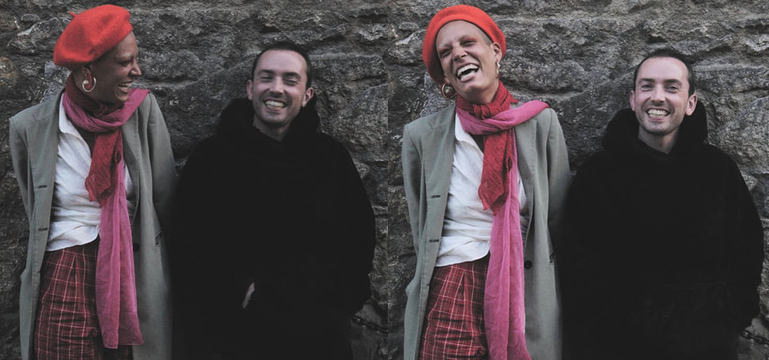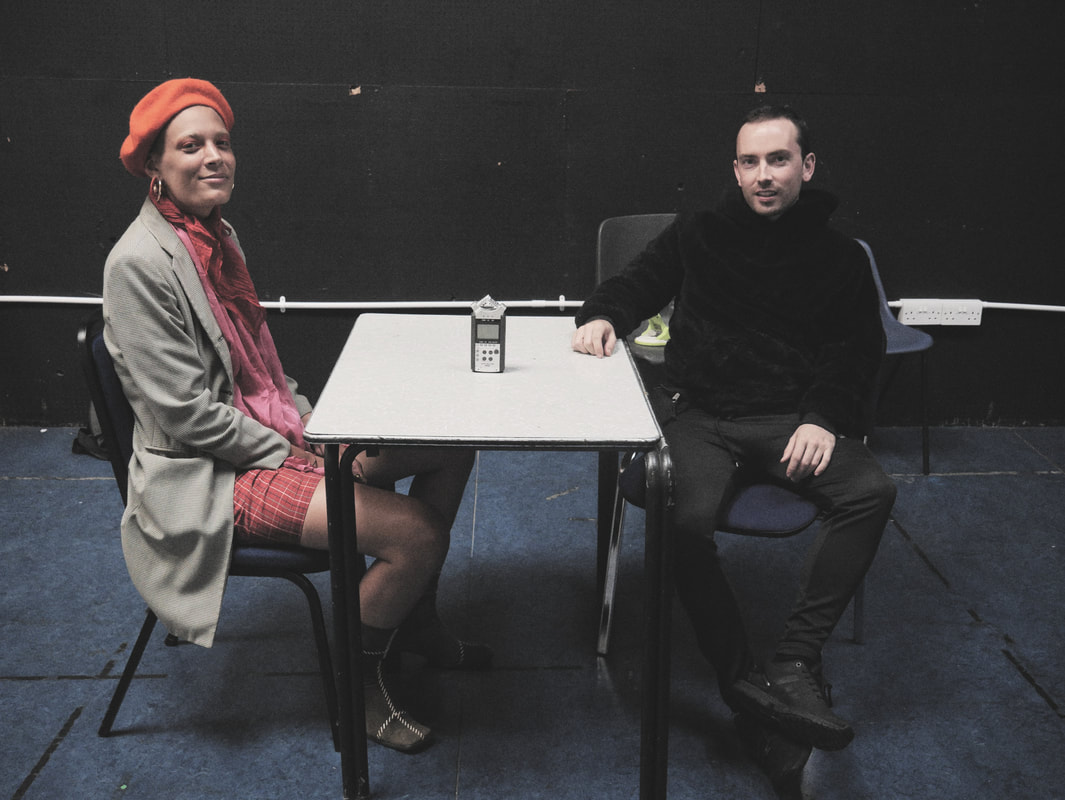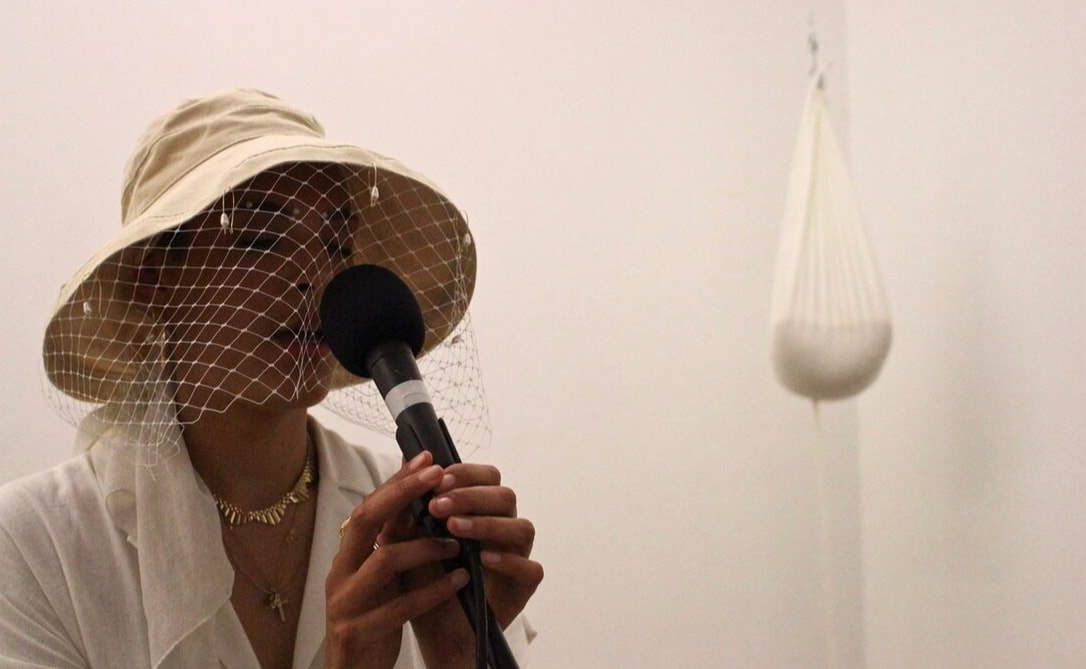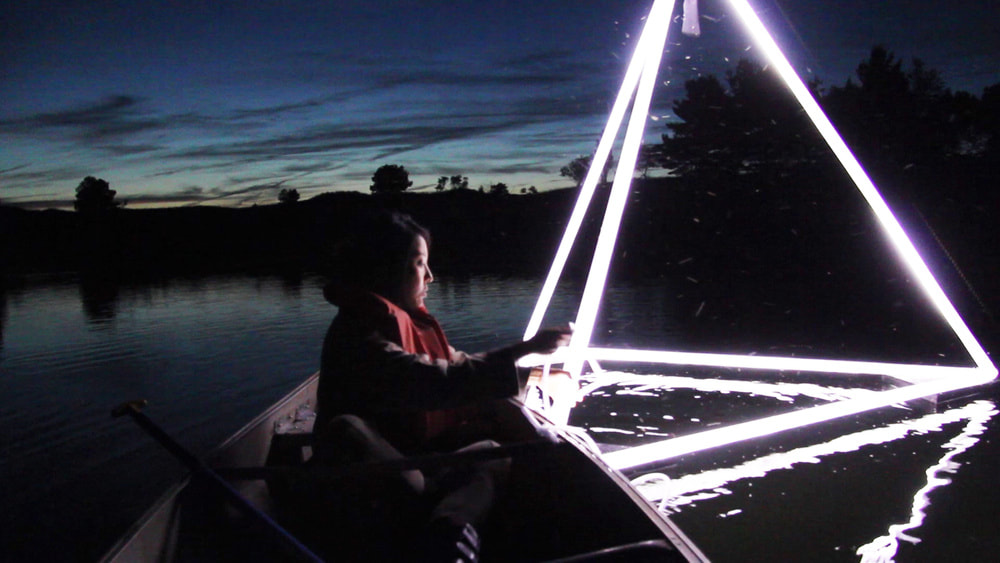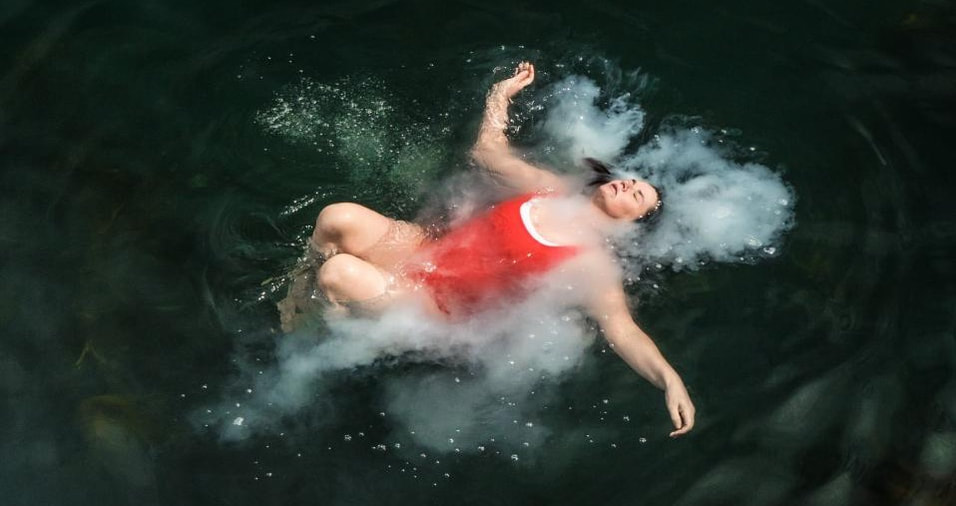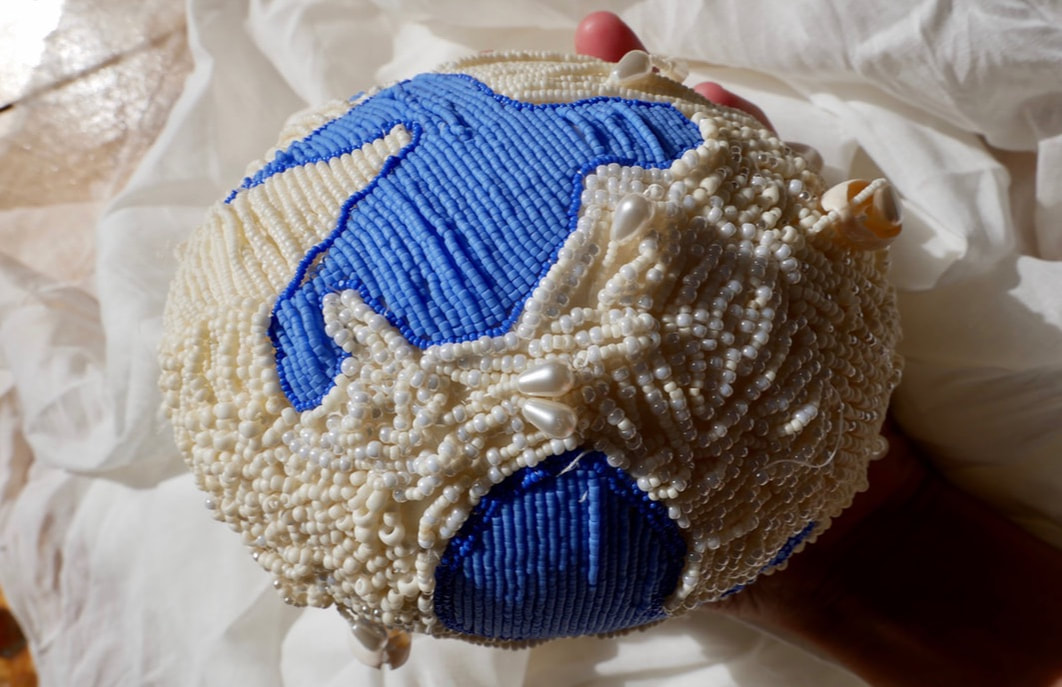MAIA NUNES
+
JONAH KING
IN CONVERSATION
|
DRAFF WAS CURIOUS TO LEARN MORE ABOUT SOME OF THIS YEAR'S NEWEST DUBLIN FRINGE ARTISTS, SO WE HOOKED UP MAIA NUNES AND JONAH KING TO HAVE A CHAT. BOTH HAVE A BACKGROUND IN FINE ART, BUT ARE PRESENTING PERFORMANCE WORKS IN FRINGE. JONAH IS COLLABORATING WITH MAEVE STONE AND EOGHAN CARRICK ON BODIES OF WATER, WHILE MAIA PERFORMS IN THEIR OWN WORK INCANTATION. BOTH ARE INTERESTED IN HOW IDEOLOGIES AND HISTORIES AFFECT BODIES. THEIR CHAT ALSO TOUCHES ON THE IDEA THAT THE EMOTIONAL AND SENSORY REALM COULD ACT AS A REFUGE FOR KNOWLEDGE THAT DEFIES PATRIARCHAL VALUE SYSTEMS.
THEY MET IN JONAH'S REHEARSAL ROOM AT THE END OF THE WORKING DAY, ONE WEEK BEFORE THE FESTIVAL BEGINS. |
|
Maia: Okay. Cool, so shall we start?
Jonah: Yeah, let's start. M: So you have a background in fine art right? J: I went to NCAD, I did Fine Art Media. M: Okay, cool. And then you went to the States? J: And then I went to Columbia in 2014 to do my Masters. What did you do? M: I did Textile Art and Artefact [TAA]. It was kind of a new course when I started it, and it had just made the transition. It was into design for a while, and then it made the transition into fine art. J: Nice. M: And the way they kind of sold it, was like, it's really process-lead. It's like sculpture but like through materials. J: Wow, cool. M: And then actually the course didn't have a lot of resources and stuff, there was a lot of… J: Oh, do you have mixed feelings about it? M: I sort of feel now, I mean, I think the course gave me a lot and it was super enriching in lots of ways and it helped me in my process and in how I think about things. I really enjoyed it because I like doing stuff with my hands, but I sort of think maybe I should have done sculpture. J: Do you think it was maybe kind of responding to like, that feeling that NCAD-sculpture was very dematerial… dematerialised? I don't know what you call it. M: Yeah, you would just be in your head swimming and I'm a super heady person in general. So, I think I made the decision that like, okay... If I have something tangible and TAA is known for having good briefs and deadlines and, like, I work really well in that way. So it was like, maybe that would be a better format for me to establish a structure for myself. And maybe it was. J: Yeah. M: But I didn't make any performance work in school. J: Did you not? M: And I wonder, like, if I had been in sculpture would I maybe have made performance work. J: So, how, when did you graduate? M: So maybe, 2016 or something, 2017, yeah. J: Yeah, and you've been making sculptures since then? M: No, I've been making performance work. I went to San Francisco for a couple of months and worked with Tania Bruguera. J: Oh, I know her, yeah. She's great. M: Yeah! So, I did some assisting work and I got a grant and I was helping with archiving this body of work around useful art. And then also took part in her first Escuela de Arte Útil, which is her school in a gallery space. I did that for a while and then came back and was like, okay what am I doing. I need a practice. What am I, what kind of artist am I? J: Who am I? Yeah, totally. M: Yeah, exactly. Existential crisis. J: Such a shock. M: Every second week. J: Oh my god, yeah. I know, Jesus. M: Yeah. So, what I was going to ask is, is most of your work in video, like lens-based? J: It is mainly, yeah. M: Okay, yeah. And would it have always been, or…? J: Ehm, no, I had like a body of work while I was at NCAD that was more social practice. M: Okay. J: It was like a lot of group organising; lots of people coming together in social platforms. We ran programming in Dublin where kids from transition year programmes would come in and work with mavericks and radical people of previous generations. We had older people come in and talk about how they started the first pirate radio station and how they were campaigning for contraception before it was legal, etc. M: Cool! J: And it was the way to have a public debate. Then I ended up co-founding a project called Exchange Dublin. We received arts council funding in 2009. It was a crazy experimental political art project space that we had in Temple Bar. And we got a building and a bunch of money to have an art centre. We were kind of thinking about non-hierarchal community buildings. M: Okay. J: So we created an ad-hocracy political system, where we tried to programme the space without any managerial structure. It was a precursor to Occupy Wall Street so it had a lot of those kind of ideas in it, and we learned a lot of the same lessons I think, but maybe slightly earlier. M: Yeah. J: And, so that was a big body of work. M: Okay, so you've always worked in quite a collaborative way? J: Yeah. M: Because that was going to be one of my questions. Maia and Jonah in conversation
J: Yeah, my work has a lot of people in it. And I think it comes from that. Because I was really influenced by anti-globalisation movements, summit protests and lots of anarchists and I was sleeping in tents and fields and stuff. I really enjoyed that in my teens. And so, we took those ideas into those projects and I think they sort of stuck. After that I turned to film, video projects and writing. Because I wanted more of a speculative space.
M: Okay, do you feel, do you still kind of start with ideas through writing? Is that the beginning of your explorations? J: I think I start with an image or with a diffuse idea and then writing is a way to develop an instruction manual, to understand what the work wants to be, how I'm going to carry it out. M: Hmhm. writing is a way to develop an instruction manual, to understand what the work wants to be.
|
M: Yeah, I don't think it's angry. I think I have been angry and I think I am angry. And there is pain there, for sure there's pain, for sure there's injustice and for sure there's heartache and all of those things... but I agree with you, I don't think it's an aggression, I don't think my work is an aggression. I think it's a basket, I think it holds everything and let's it be and then notices things and sort of pulls them out into the light. I would read a lot of critical theory and race theory and also queer theory and you know, my work would be very rooted in that thought process. But, when I actually make the work I try and step back from that. I'm more interested in oral histories in people and embodied wisdom, emotional knowledge and emotional integrity.
J: Yes, yes. M: But the two are like, two sides of a coin. And it's kind of funny, I think, when people try and look at things critically without looking at things emotionally. J: Yeah, totally I agree with you. I think it's patriarchal. M: Blind or something. Yeah, it's completely patriarchal. J: I think it's a way to disparage a type of knowing that was formerly subjected to 'women's knowledge'. M: Yeah, and like black and brown people. J: Yeah. M: For sure. I think that that type of work is moving from a space that is like, your belly space, that core part of you. My mom always says, move from your belly, listen to your belly. That part of you, that's what my work is trying to tap into, it's like, ehm, yeah. That kind of ancestral wisdom, that embodied knowing, these stories that have been passed down and heard and bent and changed, to kind of suit each person. J: Like the knowledge. M: Yeah. J: Yeah. And also that they could survive. M: And it was a mode of survival. THat ancestral wisdom, that embodied knowing, these stories have been passed down and heard and bent and changed.
|
|
Maia's show Incantation runs at the Chocolate Factory from the 21 - 22nd September, with shows at midday and 2pm. Jonah's show, Bodies of Water, is created in collaboration with Maeve Stone and Eoghan Carrick. It runs from the 7 - 12th September, daily at 6.30pm, also at The Chocolate Factory. You can book tickets for both shows at fringefest.com.
Published 03/09/19 |
